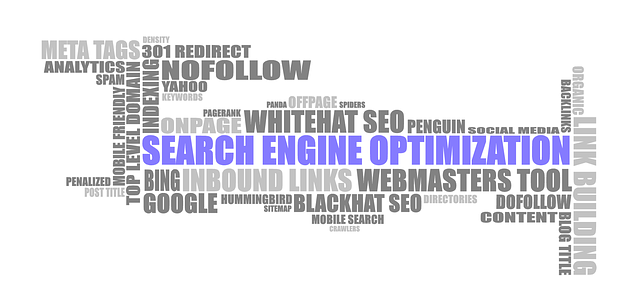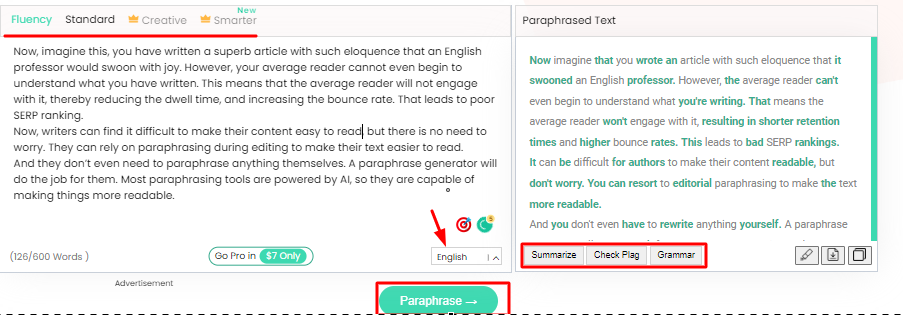A Guide to Help You Create Unique and SEO-Friendly Content
Content writing is one of the most successful content marketing strategies available today. It has various advantages such as long-term benefits and relatively low investment costs. But like all other things, you can’t just do it willy-nilly.
The content used for this type of marketing is supposed to be unique, and SEO-friendly. Those are the two most important things that dictate the success of a content marketing strategy. Failure to meet these requirements will always result in poorly performing content.
So, we are here to tell you how you can create unique and SEO-friendly content reliably. The tips mentioned in this article are not far-fetched and unreal. You can practice them in your day-to-day writing. So, read on and learn how to create optimized content.
Table of Contents
Some Tips for Creating Optimized Content
Here are some actionable tips that you can utilize to create unique and SEO-friendly content.
1. Do Ample Research
Content writing always relies on research. Without researching the topic, you cannot write anything worthwhile on it—unless you are an expert of course. But research does not stop at subject knowledge when it comes to content marketing.
You also need to do keyword research. Keyword research involves learning about the relevant keywords that your content needs to target. If they are not targeted properly, then your content will not be shown to the right audience. This can severely affect its performance.
So, you need to do two kinds of research, one to get knowledge of the topic, and the other to learn about the relevant keywords as well as their long-tailed and LSI variants.
Then you need to sprinkle these keywords throughout your write-up. This sprinkling gets picked up by the search engines and they are able to show your content to the right people.
This is the ultimate goal of content marketing—reaching the parties that can benefit from your brand and making them aware of your existence.
2. Create Value-Added Content
Value-added content means two things
- That the content is unique i.e., plagiarism free
- That the content is exclusive to your platform i.e., cannot be found elsewhere
By creating value-added content, you can improve its reception among your audience. Good reception is tantamount to good SEO because the user experience is now a measurable SEO ranking factor. It is measured through metrics such as dwell time and bounce rate.
Avoiding plagiarism is naturally good for SEO because you will not get penalized for using black hat tactics. Penalties for using black hat tactics include getting a rank demotion or complete de-listing from the search engine index.
Obviously, these are bad outcomes because your content will not be able to fulfill its purpose. That’s why creating value-added content is good for SEO, because in doing so, you automatically avoid using black hat tactics.
3. Format Your Content for Scanning
This tip makes your content SEO friendly in two major ways. It improves the user experience as well as directly affects SEO.
When you segment your content appropriately and use headings and subheadings to create sections dealing with different aspects of the topic, you improve its readability.
People seldom read an entire article from start to finish. Their objective is to open a blog post, check the headings, read the one they need, and leave. If they find a blog post that does not have any formatting, then they leave without reading it all. This contributes to a high bounce rate which reduces your SERP (Search Engine Results Page) ranking.
But when formatting is done properly, none of that happens. Your readers come, read and then leave or read even more. This contributes to a great dwell time and less bounce, improving the SERP ranking.
Formatting also has the advantage of making your content more indexable. Crawlers are able to learn what your content is about if they find headings and the relevant keywords in the content of those headings. A well-crawled page is more likely to rank higher in the SERPs than a poorly-crawled one.
4. Maintain Sixth to Seventh Grade Readability
It is unfortunate, but the reality is that a large adult population of the world doesn’t have a reading age that matches their real age.
In the UK, the average reading age of adults is just nine years. And in the US, almost 54% of the population cannot read above a sixth-grade level. Why does this matter? Well, we already mentioned how user experience is a ranking factor, and that is measured by dwell time, and bounce rate.
Now, imagine this, you have written a superb article with such eloquence that an English professor would swoon with joy. However, your average reader cannot even begin to understand what you have written. This means that the average reader will not engage with it, thereby reducing the dwell time, and increasing the bounce rate. That leads to poor SERP ranking.
Now, writers can find it difficult to make their content easy-to-read, but there is no need to worry. They can rely on paraphrasing during editing to make their text easier to read.
And they don’t even need to paraphrase anything themselves. A paraphrase generator will do the job for them. Most paraphrasing tools are powered by AI, so they are capable of making things more readable.
Of course, not all writers need a paraphrase generator, they can switch between different writing levels very easily.
Anyhow, now, you should understand why your writing should be around the sixth-grade level. It’s so that the largest number of people are able to engage with your content. And that is also the reason why writing above the seventh-grade level is not SEO-friendly.
5. Add and Optimize Images
Images have a few distinct advantages that make them quite SEO-savvy. However, unoptimized images can also result in terrible results for SEO.
Before we go too deep into that conversation, let’s just look at the advantages first.
- The first major advantage is that images allow your site to be found through image searching. And a new source of organic traffic is always a good thing for SEO.
- It improves the user experience because it breaks down the monotonous walls of text, and it can present information in a more engaging and attractive way.
Now, let’s take a look at why unoptimized images are bad for SEO. The main reason is short attention spans. Nowadays the average human has an attention span of 8.25 seconds, which is very short.
This means that if a website takes too long to load, then the visitor will leave before it finishes loading. Unoptimized images take a huge toll on loading times. A large image can take anywhere from one second to almost a minute to load depending on its size.
That’s why optimized images that are compressed in size are necessary, as they load very fast, and the website does not slow down.
6. Add Links to Other Relevant Content
Nowadays, people are not looking to read super-comprehensive articles that cover all the details of a topic. They are looking for short pieces that deal with their specific issue. That’s why many times writers have to leave out important details and sub-topics in favor of the article length.
But they can still provide that knowledge in case the reader is not already aware of it by using links. Let’s say that you are writing an article about dealing with plagiarism. You need to discuss the types of plagiarism as well because depending on the type, you can take different steps. However, the article length does not allow for it. In this case, you will mention types of plagiarism in a single line and link an article that explains them.
That way you will still provide that information without making the article too long. Adding links like this improves the chances of raising your SERP ranking. Search engines find these links during crawling and realize that a particular page has more information to offer. That counts as a plus point.
7. Proofread for Mistakes
Finally, one last thing you can do is proofread your content. Proofreading is helpful for creating the best version of your article. It can help you find small, overlooked mistakes, that are irksome to a reader.
The most common mistakes found in proofreading are spelling mistakes, incorrect punctuation, wordy sentences, and clunky passages. All of these things contribute to a bad user experience which automatically makes them bad for SEO.
The good thing is that they are all very easy to deal with, it is only finding them that is a problem. By getting someone else to proofread your work, or doing it yourself after a day or two, you can find these mistakes and correct them. This serves to improve the SEO-friendliness of your content.
Conclusion
With this guide, you can get started on optimizing your content for SEO. These are the very basics that you must meet before you can run a successful content marketing campaign.
You can always look into more advanced techniques for improving SEO-friendliness once you are comfortable with the basic ones. Hopefully, this article helped you somewhat, and that you gained something from it.
Follow Us On:


